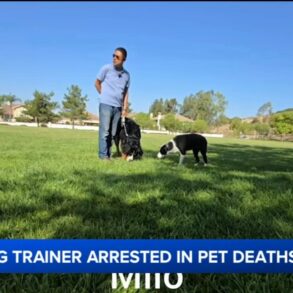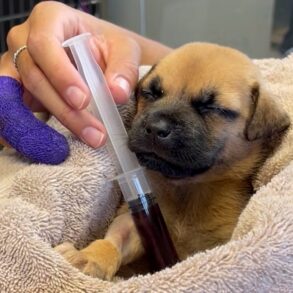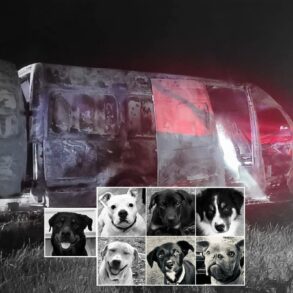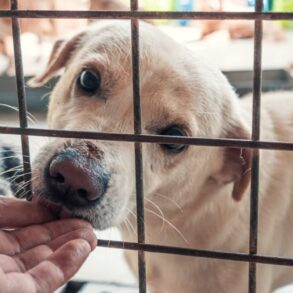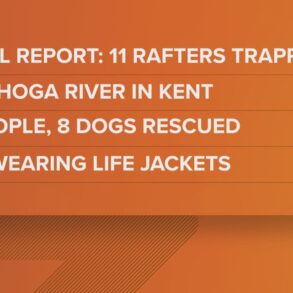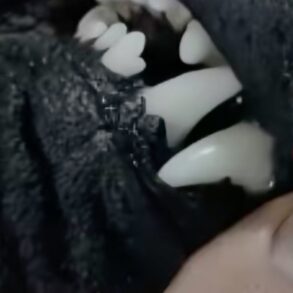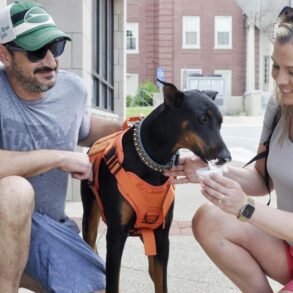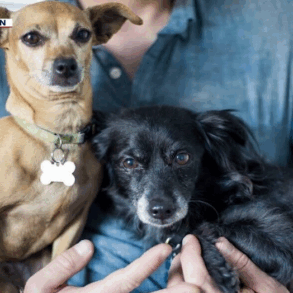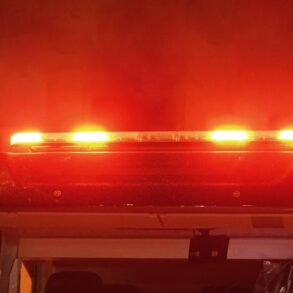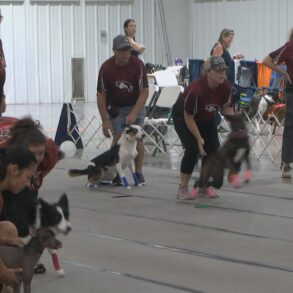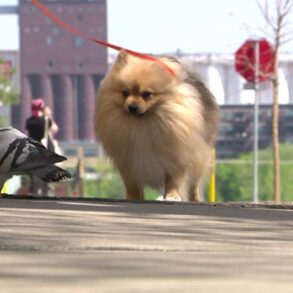- For nearly 40 years, the Chernobyl exclusion zone (CEZ) has been a laboratory for scientists to study the long-term effects of radiation exposure.
- One of the ongoing subjects in this unintentional laboratory is the group of stray dogs that mysteriously exhibit genetic differences from populations located.
- A new study determines that radiation-induced mutation is not the cause, and that the true reason could be related to intense selective pressures or other toxins released in to the environment during decades of cleanup and remediation.
On April 26, 1986, the worst nuclear disaster since World War II decimated Chernobyl in the Soviet Union. Nearly 40 years later, a lot has changed. Chernobyl, for one, is now within the borders of Ukraine, and the destroyed reactor is now capped by a massive dome, known as New Safe Confinement.
Oh, and the dogs are different, too.
Although Chernobyl was an unprecedented moment in history that caused terrible suffering to both humans and the local environment, the Chernobyl exclusion zone (CEZ) provides an equally unprecedented opportunity to study the long-term effects of radiation exposure, including the effects on stray dogs that stayed behind when the CEZ was initially evacuated. Previous studies of these dogs, which compared their genes to similar populations in nearby Chernobyl City and elsewhere in eastern Europe, have found distinct genetic differences between the groups. But scientists couldn’t be sure exactly what was causing this genetic variation.
Some experts theorized that this could be radiation-induced mutations at work, but others disagreed, saying how isolating the cause other selective pressures or inbreeding can be difficult. ““[These studies] are so hard … there’s lots of other stuff going in the natural environment,” one scientist told Science News back in 2023.
Now, a new study published nearly two years later confidently asserts that we can at least cross radiation off the list. Published in the journal PLOS One by scientists from North Carolina State University and Columbia University Mailman School of Public Health in New York, this new genetic analysis looked at the chromosomal level, the genome level, and even the nucleotides of the Chernobyl dogs, and found no abnormalities indicative of radiation-induced mutation.
“We have been working with two dog populations that, while separated by just 16 kilometers, or about 10 miles, are genetically distinct,” Matthew Breen, senior author of the study from North Carolina State University, said in a press statement. “We are trying to determine if low-level exposure over many years to environmental toxins such as radiation, lead, etcetera, could explain some of those differences.”
To establish a baseline for comparison, the team compared the genome of Chernobyl City dogs located 10 miles from the CEZ to dogs found in regions of Russia, Poland, and other nearby countries. Once they determined that the populations were genetically similar, they then used the Chernobyl City dogs as a representative control for their study. Of course, the task wasn’t simple, as more than a couple dozen dog generations have past since the original pups that witnessed to the Chernobyl meltdown in 1986.
“We know that, for example, exposure to high doses of radiation can introduce instability from the chromosomal level on down,” Breen said in a press statement. “While this dog population is 30 or more generations removed from the one present during the 1986 disaster, mutations would likely still be detectable if they conferred a survival advantage to those original dogs. But we didn’t find any such evidence in these dogs.”
However, the mystery is far from solved. While radiation may not be the direct cause of the genetic mutations, many other toxins—including heavy metals, lead powder, pesticides, and asbestos—have entered the environment due to cleanup and remediation efforts over the decades. The authors also theorize that it’s possible the original surviving dogs already possessed genetic traits that increased the likelihood of their survival.
“So perhaps there was extreme selective pressure at the start, and then the dogs at the power plant just remained separate from the city population,” Megan DilIon, lead author of the study and NC State postdoctoral student, said in a press statement. “Investigating that question is an important next step that we are now working on.”
Darren lives in Portland, has a cat, and writes/edits about sci-fi and how our world works. You can find his previous stuff at Gizmodo and Paste if you look hard enough.
This post was originally published on this site be sure to check out more of their content.






